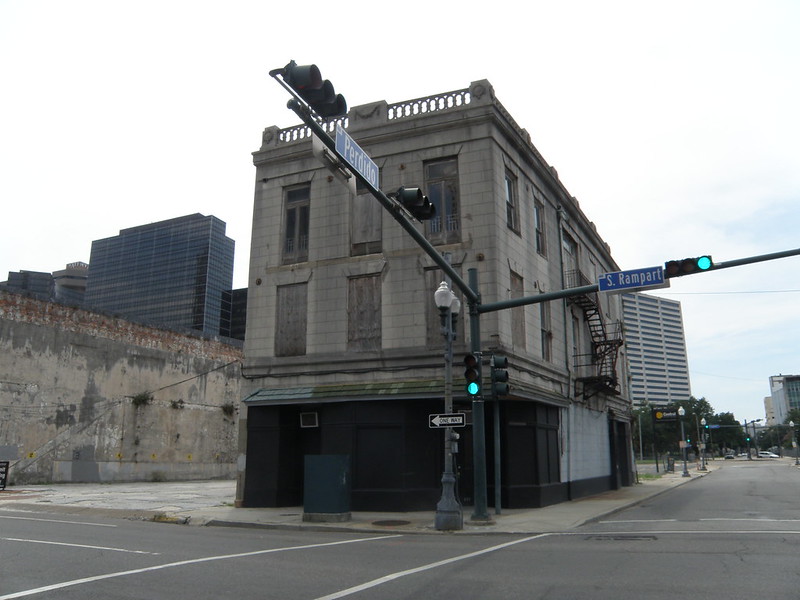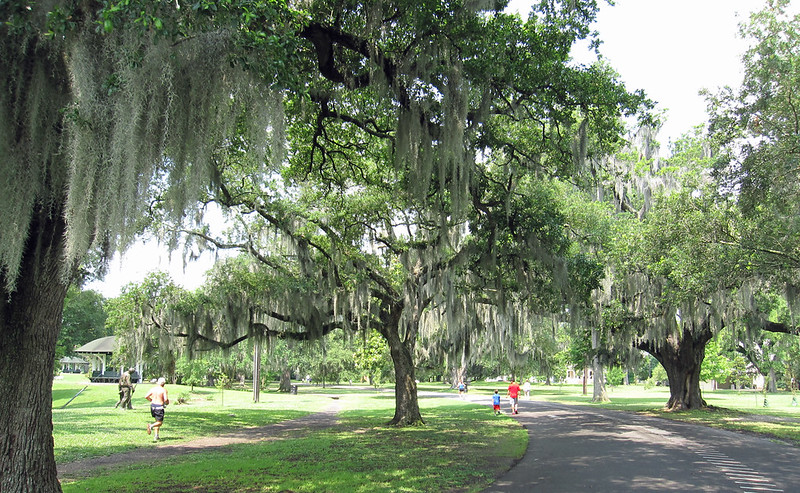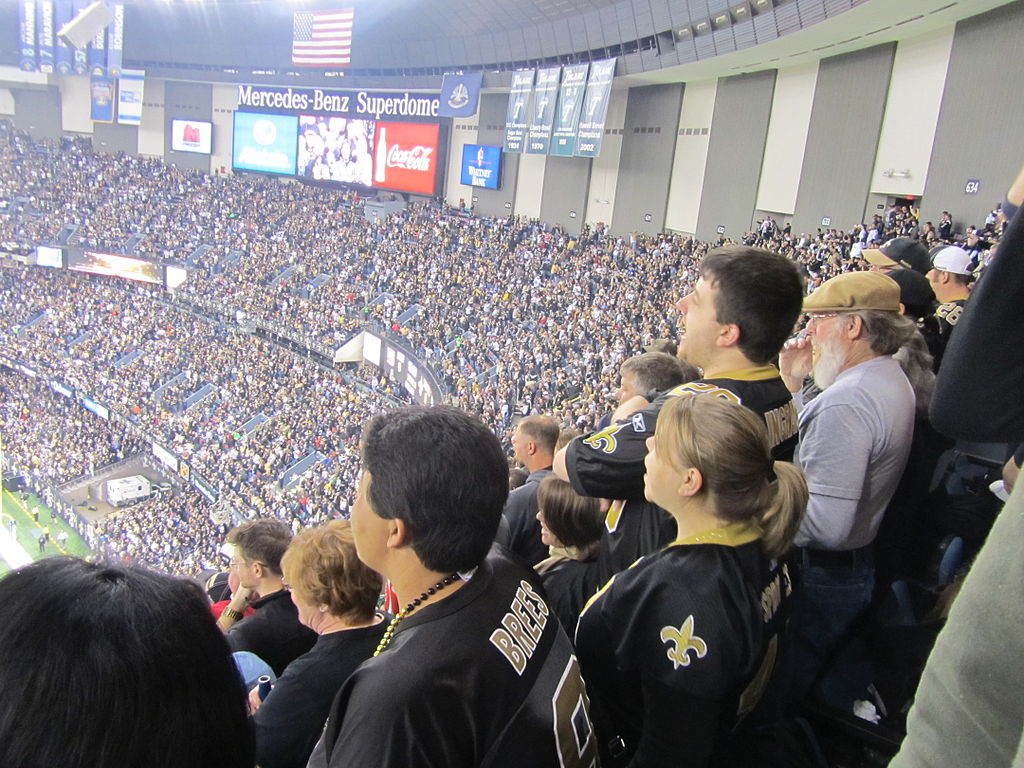The Eagle Saloon is located on 401 South Rampart Street in the heart of downtown New Orleans, about two blocks away from the Superdome. The building was built in 1851 and was owned by two African-American fraternal organizations. The groups leased out the third floor of the building, which became a place for influential jazz musicians such as Buddy Bolden and Jelly Roll Morton to come and showcase their talents. John Robichaux’s bass drum provided the rhythm for dances, and Johnny Dodd’s signature clarinet was also a regular at the increasingly popular Eagle Saloon. The venue’s consistent lineup of jazz stars in the 20s and 30s influenced the next class of New Orleans Jazz artists. A young Louis Armstrong grew up in the South Rampart neighborhood and is said to have listened to bands playing in the street. Songs like “Saturday Night Fish Fry” by Louis Jordan described the Saloon as a place where music and dancing carried on until sunrise. The Zulu Social Club began on the same block in 1909, and the Eagle Saloon was often used as a starting point for Zulu parades and funerals. Zulu events and the Eagle Saloon helped fill the surrounding streets with music.
The South Rampart neighborhood where the Eagle Saloon was located was home to many non-whites in the late 1800s and first half of the 20th century, who were relegated to this area by the existing racial hierarchy of the city. Historically, the best real estate in New Orleans was in Uptown. In both West London with the River Thames and in Uptown New Orleans, being upriver meant not receiving sewage and garbage in one’s water like the downriver French Quarter area did. Downtown’s lower elevation resulted in less protection from storms and flooding, and its soggier soil meant architecture and city development was more difficult in this area. These geographic inequalities were public knowledge, with the downtown area referred to as the “Back of Town”. Blacks, Chinese, and Italians made South Rampart street their own with businesses, music venues, dance halls, and pawn shops. The area’s reputation for entertainment resulted in it being labeled the “Harlem of New Orleans” by a City Guide in 1938.
As the 20th century progressed, the racist socio-political systems in place in New Orleans sent Jazz musicians elsewhere to showcase their talents. The construction of the Central Business District in the 1950s resulted in forced restructuring of the South Rampart area and was just another nail in the coffin carrying South Rampart Street’s vibrant entertainment scene.

401 S Rampart Street, New Orleans. Home of the former Eagle Saloon. (Photo by: Karen Apricot, Flickr)
Today, windows on the first floor of the Eagle Saloon expose a gutted, empty interior. Graffiti covers parts of the exterior walls. Attempts to renovate and revive the Eagle Saloon have often boiled down to a race against time over the last two decades, as locals wishing to preserve the historic venue try to raise enough money to save it faster than the building falls into further disarray. Nondescript offices and parking lots continue to pop up and surround the building, resulting in further anonymity. A sign about its place in the National Register of Historic Places and posters of past musicians are the few testaments to the Saloon’s storied past. A club that witnessed the birth of jazz now sits empty, fading into history.
The rumbling of a streetcar is one of the only ways a tourist unfamiliar with New Orleans would recognize that Uptown is only 5 miles away from the heart of downtown. The Uptown neighborhoods stretch from the Garden District’s manors and mansions and their $1.6 million average listing price to the wide green spaces, golf course, and riverfront of historic Audubon Park. On a jog or bike ride around the streets of St. Charles, Freret, Carrollton, Audubon, and others, one will see at least one example of parents pushing strollers, private schools, gardners, or fellow runners on every other block.

Audubon Park, Uptown New Orleans. (Photo by: InSapphoWeTrust, Flickr)
Unlike in the French Quarter, it is easy to forget about New Orleans’ homeless population, the tenth highest per 100,000 people in the U.S., when lost amongst the greenery of Uptown. But while this area of New Orleans appears to be a completely different town, it does share something in common with the downtown area: a lively bar scene.
Henry’s Uptown Bar on Magazine Street opened in 1900 and is the fourth oldest bar in the city. Unlike the Eagle Saloon, Henry’s has been continuously operated since its doors were first opened. The original owners were Irish immigrants, who then passed the bar down to their children. The bar is named after Henry Gogreve, who married the granddaughter of the original owners and became owner himself in 1946. He ran the business into the 21st century before passing away in 2010. It is now run by his children. Like many places in New Orleans, Magazine Street has over two centuries of history. In fact, at the turn of the 19th century it’s geographic location between the river and the residential area made it an important enough street to necessitate urban realignments to the surrounding area – a French city planner used Magazine Street to divide up an Uptown plantation in 1806.
In 2013, Henry’s Uptown Bar was featured in an article for WWNO, New Orleans Public Radio, on where New Orleanians watched the Saints games. The article’s introduction describes Saints games as “a special ritual for New Orleanians,” something as “essential to the character of the city and the region as Mardi Gras.” In an effort to illustrate the widespread geographical hold Saints games have on the city, the article mentions three distinct areas across the city where people watch the games; “the corner bar in Uptown, the TV studio in the CBD, (and) the living room in Metairie.” To say the Saints games are important to New Orleans would be an understatement – in 2019, with a 34.5% Nielsen rating, the Saints were not only the most watched team in the NFL for its respective home city, but the Saints in the New Orleans TV market was the most watched program in the country. It is interesting, then, that an experience so commonly shared throughout all of New Orleans should be confined by the article to those three specific sites. There is an implicit, systemic hierarchy of New Orleans geographic locations, with areas prioritized at the top enjoying radio shout-outs and decades of open doors, while those in the “Back of Town” look on from the sidelines.

Fans watching the Saints in the Superdome. (Photo by: Coastie Wife 2008, Wikimedia Commons)
 NOLAbeings
Multimedia artist Claire Bangser created NOLAbeings as a portrait-based story project that marries...
NOLAbeings
Multimedia artist Claire Bangser created NOLAbeings as a portrait-based story project that marries...
 Data corner: Adobe Suite (create a PDF, social media graphic, presentation, edit a photo and video
Data corner is where you go to work with analytics and top tech skills. It takes on everything from PERL and SQL to Canva and Sprout Social.
Data corner: Adobe Suite (create a PDF, social media graphic, presentation, edit a photo and video
Data corner is where you go to work with analytics and top tech skills. It takes on everything from PERL and SQL to Canva and Sprout Social.
